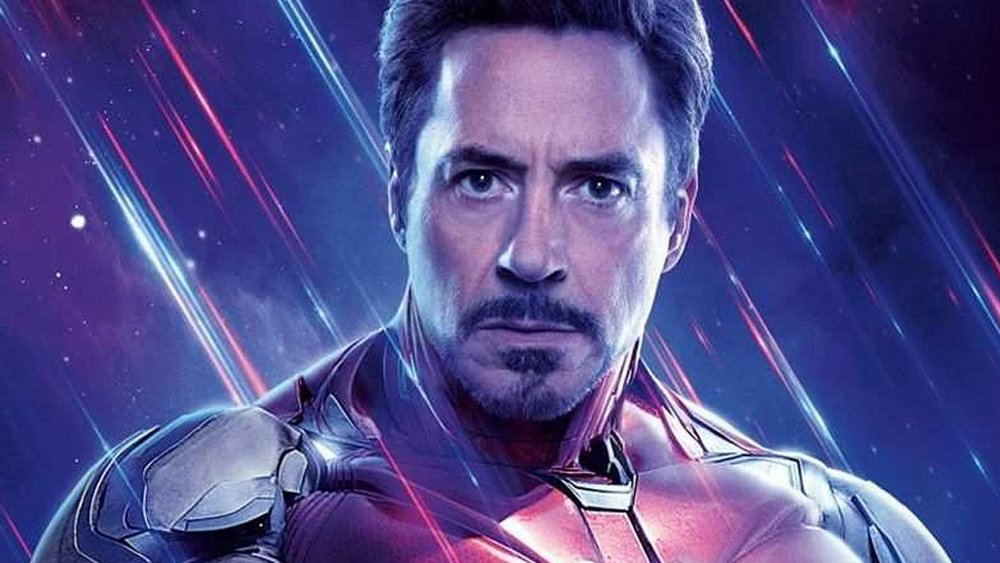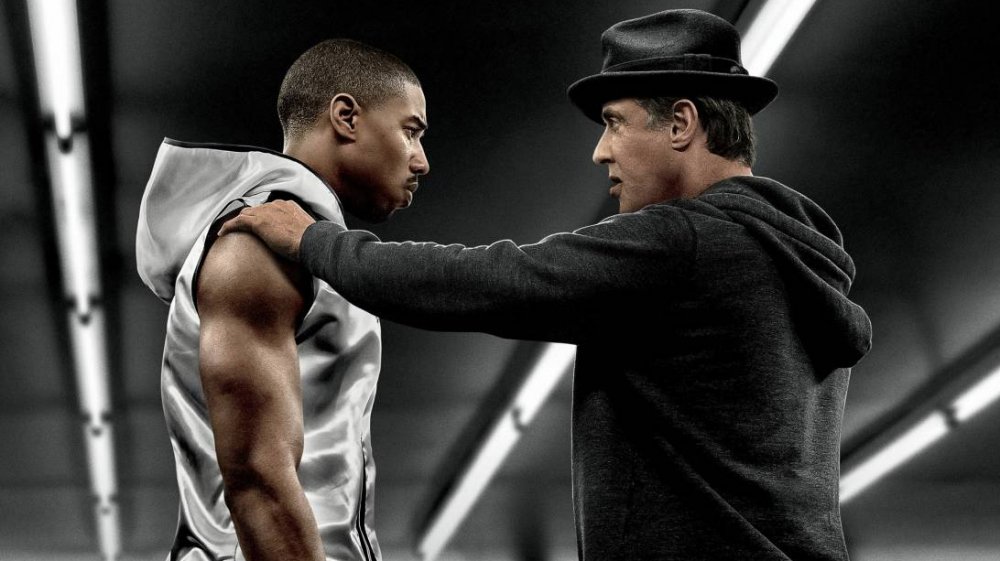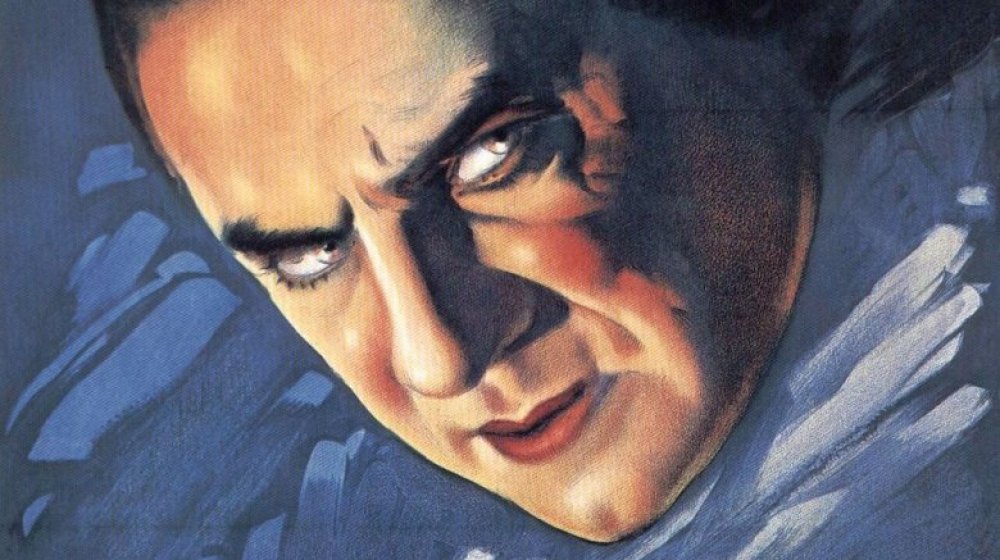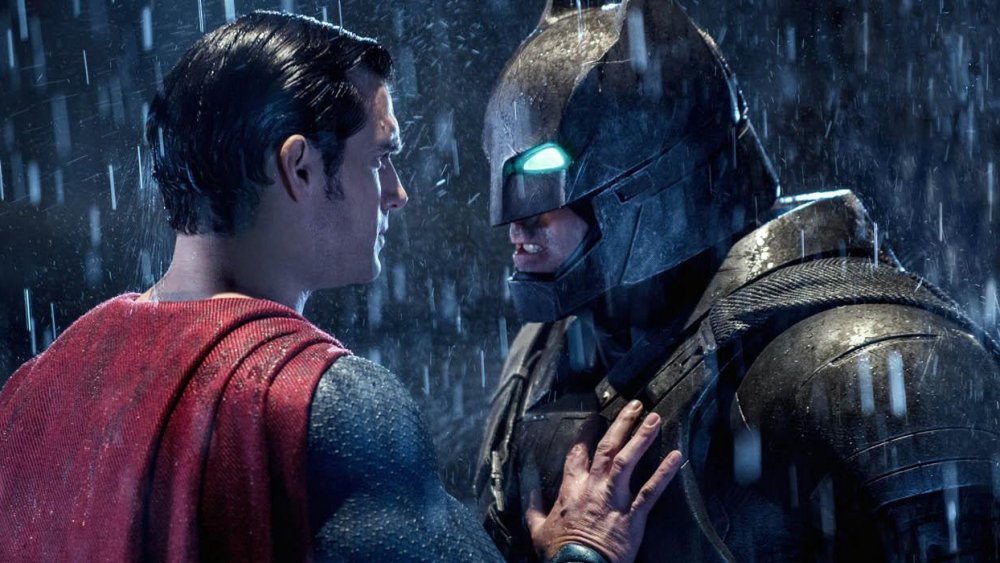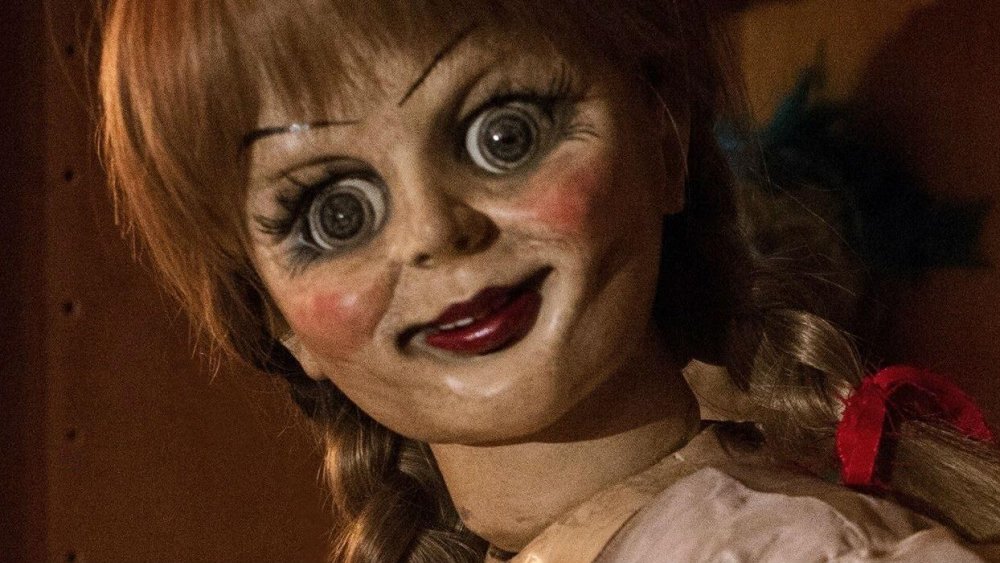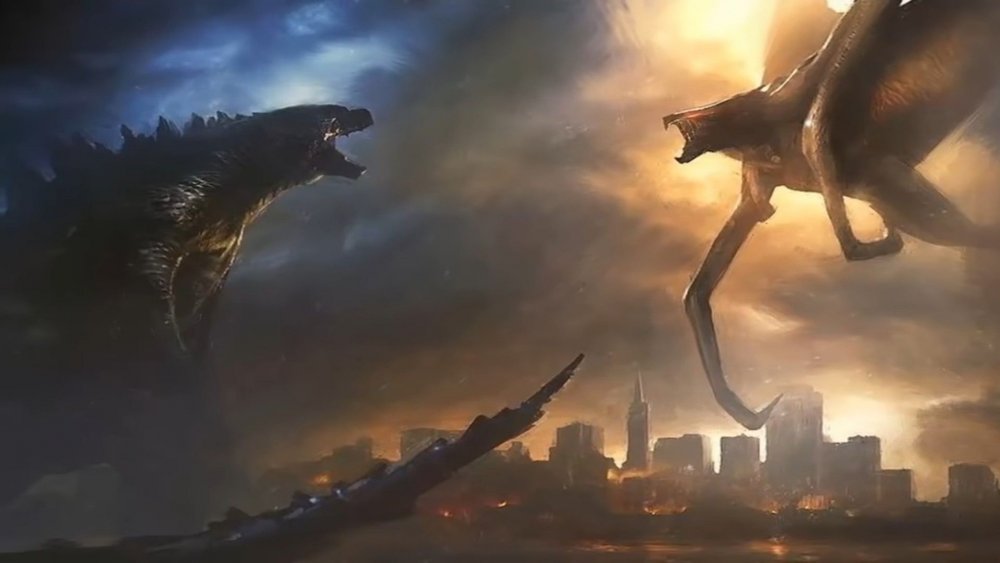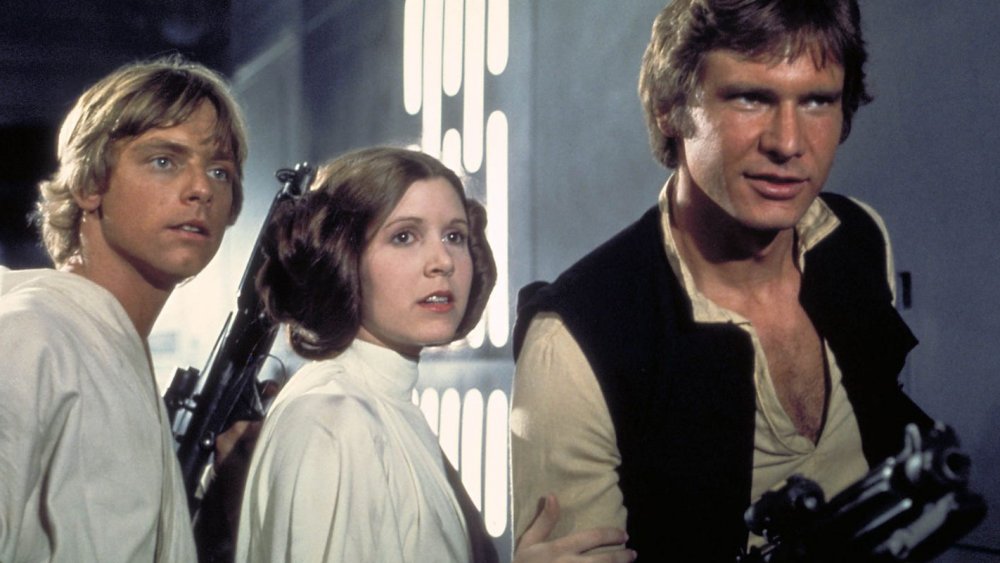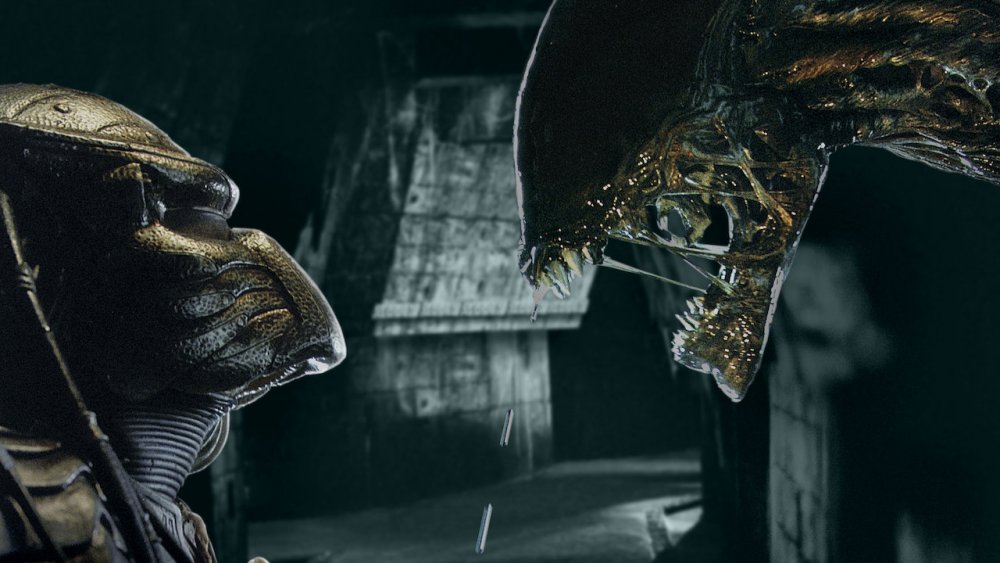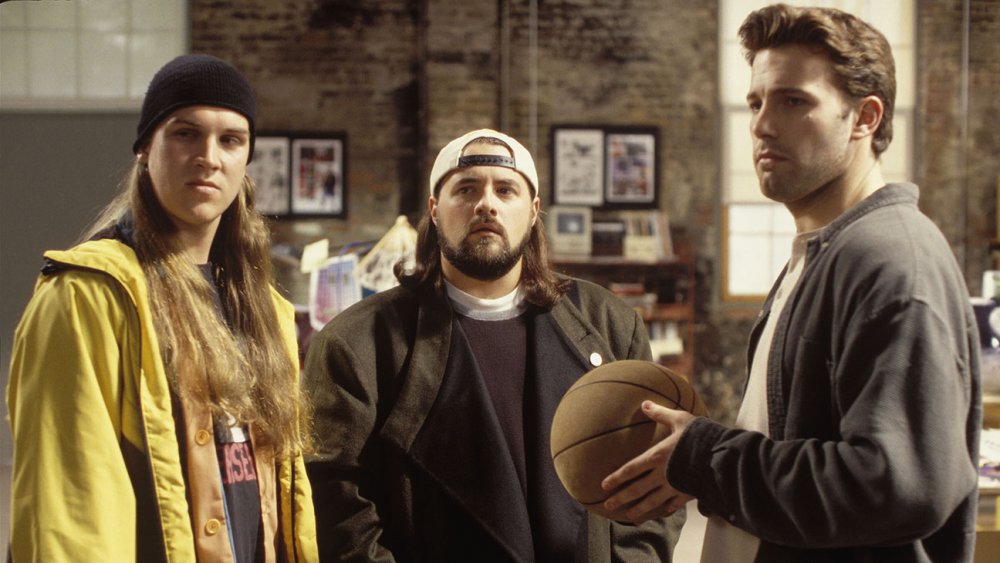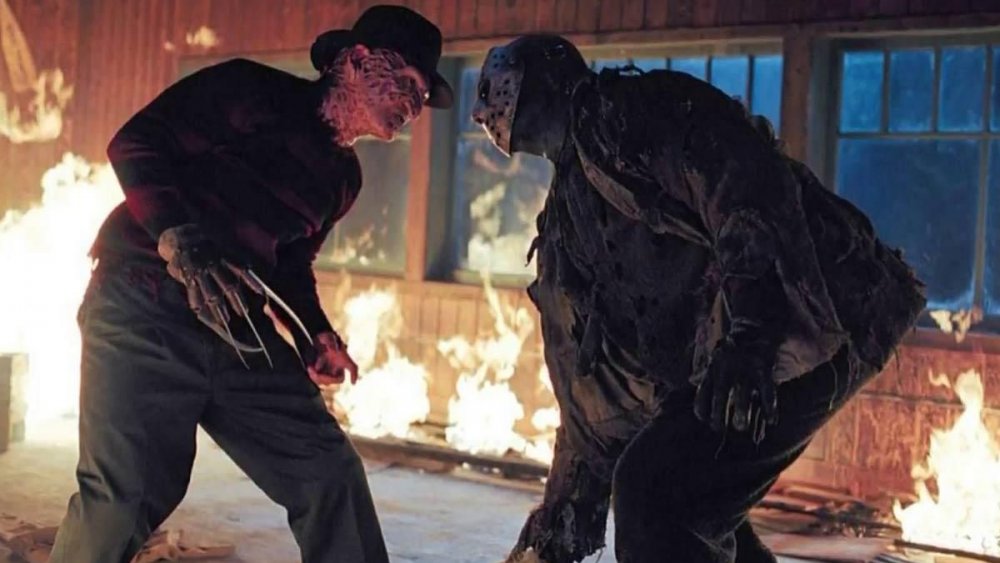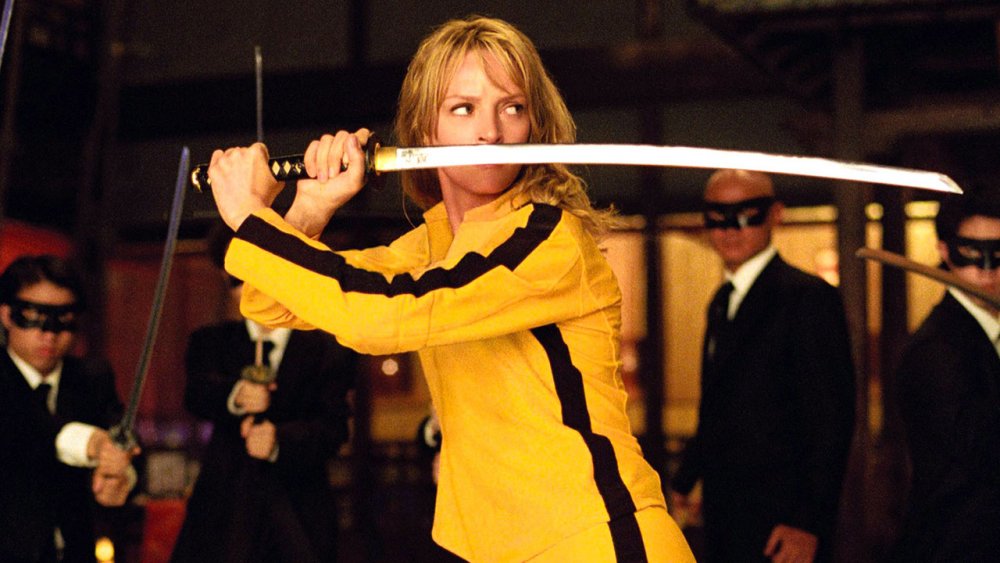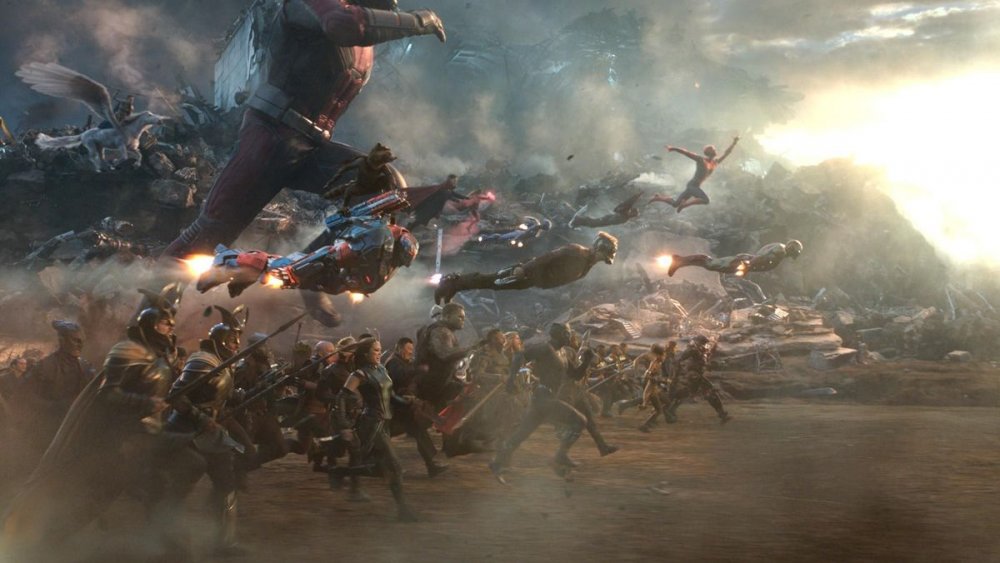The Greatest Cinematic Universes Of All Time
Shared universes aren't exactly new to the realm of art and entertainment. Some 200 years ago, for example, French writer Honore de Balzac created The Human Comedy — an interwoven universe that spanned some 91 completed novels, as well as another 46 that were never finished. And then there's Stephen King's multiverse, which connects novels like Carrie and It to The Shining and The Dark Tower series. And of course, crossovers are nothing new in the world of comic books.
However, there's something especially impressive about a cinematic universe. When big-screen franchises cross over — sharing larger-than-life characters and complex storylines with one another — well, it doesn't get any better than that. Sometimes, building a shared universe is about as straightforward as metaphorically taking all your favorite superhero toys and smashing them together. Other times, it's a bit more subtle and relies on names or props linking one movie to another. But one thing is for sure ... it's hard to get a cinematic universe right, so when they work (be it critically, financially, or just when it comes to worldbuilding), everyone is rightfully impressed. So today, we're taking a look at the world of movie crossovers as we list off the greatest cinematic universes of all time.
The Rocky cinematic universe went the distance
When Rocky made its debut in 1976, the world wasn't only introduced to what might be the greatest sports film of all time, but we met a struggling young actor and screenwriter named Sylvester Stallone. Rocky was an instant hit, winning three Academy Awards — including Best Picture and Best Director — and birthing a series of five direct sequels that offered varying quality and a ton of montages. And the fourth installment gave us Ivan Drago, so that's pretty awesome.
The original Rocky series was, in its own right, a solid achievement. But in 2015, the franchise was expanded with the introduction of a new central fighter, thanks to the release of Creed. This chapter upped the game in all the right ways, providing us with a new champ to root for, played by the talented young actor Michael B. Jordan. This practically flawless film brought the Rocky mythos into the 21st century, while giving plenty of nods to the original films, and Creed 2 helped to further the story in 2018, and a third installment is in production as we speak.
Oh, fun side note. Creed director Ryan Coogler and star Michael B. Jordan later teamed up to once again expand a renowned cinematic universe with the MCU's Black Panther.
The Universal Monsters started cinematic universes back in the 1930s
The entry dating back the furthest on our list reaches all the way to 1931, when what's now known as the Universal Classic Monsters debuted with Dracula, a film that starred the great Bela Lugosi. This was followed by Frankenstein, The Mummy, The Invisible Man, The Bride of Frankenstein, The Wolf Man, and The Creature from the Black Lagoon. (Yeah, we know The Hunchback of Notre Dame and The Phantom of the Opera came in the '20s, but it was Lugosi's bloodsucker that really got this ghoulish party started.)
These individual movies were smash hits that turned Lugosi, Boris Karloff, and Lon Chaney Jr. into household names. As a result, Universal decided to double down on their success by crossing them over in films like Frankenstein Meets the Wolf Man, The House of Frankenstein, and Abbott and Costello Meet Frankenstein. This constituted the first cinematic universe, and its success proved the formula.
Universal actually attempted to reboot this concept in 2017 with the release of The Mummy starring Tom Cruise, but the results were ... dismal. This was supposed to be followed by Bride of Frankenstein and then The Invisible Man, but the series' first outing performed so poorly at the box office that the whole plan was scrapped
The DCEU has had some amazing hits and lousy misses
As Marvel's universe took off and found runaway success, DC Comics and Warner Brothers decided to try their hand at creating their own cinematic universe. The so-called DC Extended Universe launched in 2013 with the release of Man of Steel, and as of now, it encompasses eight films that have revolved around characters like Superman, Aquaman, Wonder Woman, Batman, Shazam, the Suicide Squad, the Birds of Prey, and a smattering of villains and supporting characters.
Unfortunately for DC and Warner Brothers, their universe hasn't enjoyed the same acclaim garnered by Marvel. Its first three installments — Man of Steel, Batman v Superman: Dawn of Justice, and Suicide Squad — were panned by critics and, in some cases, audiences. Wonder Woman stood out as the franchise high point while Aquaman, Shazam!, and Birds of Prey each fared relatively well, but it's hard to argue that the DCEU has posed any serious competition to the MCU. There's a lot of buzz around future installments like Wonder Woman 1984, The Batman, and a fast reboot of The Suicide Squad, so maybe the course will be corrected.
The Conjuring franchise has scared up lots of cash at the box office
In 2013, New Line Cinema — which brought us such classics as A Nightmare on Elm Street, Teenage Mutant Ninja Turtles, and The Lord of the Rings — scored a surprise success with The Conjuring, which not only received positive reviews but raked in an impressive $319.5 million worldwide against a mere $20 million budget. This made it one of the most successful horror movies of all time, ensuring that it would get its fair share of sequels.
But things went well beyond sequels when the company decided to go ahead with a number of spinoffs that not only resulted in their own sequels but spawned an entire Conjuring universe. So far The Conjuring itself has received two additional films, while 2014's Annabelle — based on the creepy doll from the franchise's founding film — has had two sequels with a possible third coming. And The Nun and The Curse of La Llorona each seem poised to get continuations of their own. As a whole, the universe has brought in $1.6 billion on a combined budget of $139.5 million, making it the highest-grossing horror movie franchise of all time, even beating out industry giants like Alien and Halloween.
The Godzilla universe spans two different film industries
The Godzilla franchise is unique in that it theoretically spans some 75 years, two distinct national film industries, and several reboot iterations. Launched in 1954 with Japan's Toho studio release of Godzilla, the original version of the universe included fellow monsters — also known as "kaiju" — like Rodan and Mothra, who also had their own movies. Since then, the Japanese franchise has expanded to cover 32 straight-up Godzilla films and four separate series (Showa, Heisei, Millennium, and Reiwa), complete with creatures like Megaguirus, Destoroyah, and Biollante.
Eventually, Hollywood got involved, and while American filmmakers totally screwed things up with the 1998 reboot, the modern MonsterVerse has fared much better, starting with 2014's appropriately named Godzilla. The MonsterVerse then brought King Kong into the mix with 2017's Kong: Skull Island, which teased the introduction of future giant monster battles to come. This was expanded with 2019's Godzilla: King of the Monsters, which re-introduced classic nemeses like Mothra, Rodan, and Ghidorah into the mix. Next, Godzilla vs. Kong will have the two big baddies face off sometime in late 2020.
Outside the movies, Godzilla actually did battle with the likes of the Avengers, the Fantastic Four, and Spider-Man in a comic book crossover, so technically it could be argued that the MonsterVerse and the MCU intersect, which would make a universe so huge that it boggles the mind. But that all took place in the comics, and we're limiting our scope to the movies for now.
Star Wars is one of the most successful cinematic universes ever
If you were to include everything that's considered canon, plus all of the once-canon stuff that Disney threw out when it acquired rights to the franchise, the Star Wars universe would be about as expansive as the universe we actually live in. But even by sticking to the current trimmed down universe, it's big and growing all the time.
It goes without saying that this universe spans all nine of the Skywalker Saga films. From there, we add in the standalone movies like Rogue One, Solo, and the often-overlooked animated inclusion of The Clone Wars. And as much as George Lucas would like us to forget them, we can't ignore that the Star Wars Holiday Special and two Ewok-centric family films also exist. Finally, while The Mandalorian isn't a movie, it's so darn good and so relevant to the wider universe that we can't help but mention it. And while we're on the topic of TV shows, we might as well throw in Clone Wars and Rebels, both of which are still considered canon.
There had been rumors of two upcoming trilogies — a pre-prequel, as well as a trilogy helmed entirely by The Last Jedi director Rian Johnson — but Disney has walked back the idea of making more movies for the time being. For now, we can look forward to the next season of The Mandalorian, as well as three other Disney+ series, one about Obi-wan Kenobi, a spinoff from Rogue One, and one from Russian Doll co-creator Leslye Headland.
Alien vs. Predator deserves some respect
Both the Alien and Predator franchises spent a little over a decade existing in separately awesome realms, until one scene in 1990's Predator 2 smashed their universes together when it gave us a shot of a Xenomorph skull on a Predator spaceship, thereby teasing that fans would one day have the opportunity to see the two terrifying creatures duke it out.
It ended up taking another 14 years for that tease to become a reality in Alien vs. Predator and then Alien vs. Predator: Requiem. While neither of these films were considered critical successes, it's impossible to ignore the impressive scope of the universe they helped to foster, especially when you consider that Ridley Scott is hoping to make more (if not several) Alien sequels/prequels/reboots and that there may be another Predator installment on the way. So with the AVP universe expanding, will we get the chance to see the two brutal species do battle again? Only time will tell.
Kevin Smith created the View Askewniverse
It should come as no surprise that writer and director Kevin Smith — a bona fide comic book nerd — would use his movies to weave together his own shared universe. Drawing its name from Smith's production company View Askew, at this point, the View Askewniverse is comprised of Clerks, Mallrats, Chasing Amy, Dogma, Jay and Silent Bob Strike Back, Clerks 2, Jay & Silent Bob's Super Groovy Cartoon Movie!, and Jay and Silent Bob Reboot.
There are a ton of inner-universe connections that tie these various movies together, most notably the inclusion of the antiheroes Jay and Silent Bob. There are also plenty of references to — or even plots based around — the Bluntman and Chronic comic series, which was created by two of the leads in Chasing Amy and is based of the lives of Jay and Silent Bob. Several other characters make repeat appearances throughout the universe, like Dante and Randal, the two central characters from Clerks, the film that kicked the whole universe off. On top of all that, just about everyone important made an appearance in the Jay and Silent Bob Reboot. Recently, it was announced that the franchise would expand even further with the inclusions of Clerks 3 and Twilight of the Mallrats, so it seems like the View Askewniverse isn't slowing down anytime soon.
Freddy vs. Jason helped the lay groundwork for shared universes
In the early 1980s, two of horror's greatest franchises launched with Friday the 13th and A Nightmare on Elm Street. Separately, these two movies spawned a slew of sequels, spanning in quality from great to terrible. But in 1993, a crossover was teased at the end of Jason Goes to Hell: The Final Friday when Freddy Kreuger's iconic gloved hand reached out of the ground and dragged Jason's mask into the dirt.
After ten years of production hell, fans were finally given Freddy vs. Jason, which wasn't exactly a hit with critics. But the movie did perform outstandingly well in the box office, raking in an impressive $116.6 million worldwide on a $30 million budget. This massive financial success made it seem like a sequel was a sure thing, and while ideas for a follow-up were floated — including one script that pitted the two renowned monsters against the equally acclaimed horror hero Ash from the Evil Dead franchise — the Freddy vs. Jason sequel was doomed to cancellation. Still, putting these two icons together was a gutsy move that set the stage for many cinematic universes to follow.
The Tarantinoverse is incredibly cool
Perhaps the "coolest" shared universe is the one created by Quentin Tarantino, because let's face it, every movie he makes is the "coolest."
Deemed the Tarantinoverse, the clearest connections between his movies involve various brands that show up again and again, like Red Apple Cigarettes and Big Kahuna Burger. Then there are various familial connections, like "Crazy" Craig Koons from Django Unchained being the ancestor of Christopher Walken's Captain Koons in Pulp Fiction, Tim Roth's Pete Hicox in The Hateful Eight's relation to Michael Fassbender's Archie Hicox in Inglourious Basterds, or the fraternal relation between John Travolta's Vincent Vega and Michael Madsen's Victor Vega from Pulp Fiction and Reservoir Dogs, respectively.
There's even some crossover with the films of Robert Rodriguez, as both directors share the character of Sheriff Earl McGraw (Michael Parks). The law enforcement officer shows up in Tarantino's Kill Bill and Death Proof, and he also appears in Rodriguez's From Dusk Till Dawn and Planet Terror.
But this particular shared universe concept gets more complicated still. As Quentin Tarantino himself explained to an Australian news show in 2017, there are two levels to the universe. First, there's the real universe in which the characters exist, and then there's the movie universe that provides the films and TV shows those characters watch. As Tarantino put it, "From Dusk Till Dawn, Kill Bill, they all take place in this special movie universe. So basically when the characters of Reservoir Dogs or Pulp Fiction, when they go to the movies, Kill Bill is what they go to see. From Dusk Till Dawn is what they see."
The MCU is the greatest cinematic universe of all time
It's hard to argue that there's any cinematic universe that can compete against the pure overwhelming massiveness of the MCU. Leaving the television shows and comics aside, the Infinity Saga spans an astounding 23 movies, and that's just the beginning. With Phase 4 set to pick up where Endgame left off, we already know that a slew of new additions are coming our way to enrich this already expansive universe.
The MCU kicked off in 2008 with the release of Jon Favreau's Iron Man, which at the time seemed like it would probably result in a reasonable standalone series. However, that post-credit scene with Nick Fury promised something special. When The Avengers hit the screen in 2012, we got a more substantial taste of what was to come, and 2016's Captain American: Civil War really gave us a look at how grandiose the Marvel vision was. But it was Infinity War and Endgame that really blew our minds in terms of how many widely varying characters and storylines could be woven together. There's never been anything quite like it, and it's hard to imagine that any other cinematic universe will ever surpass its scope.
